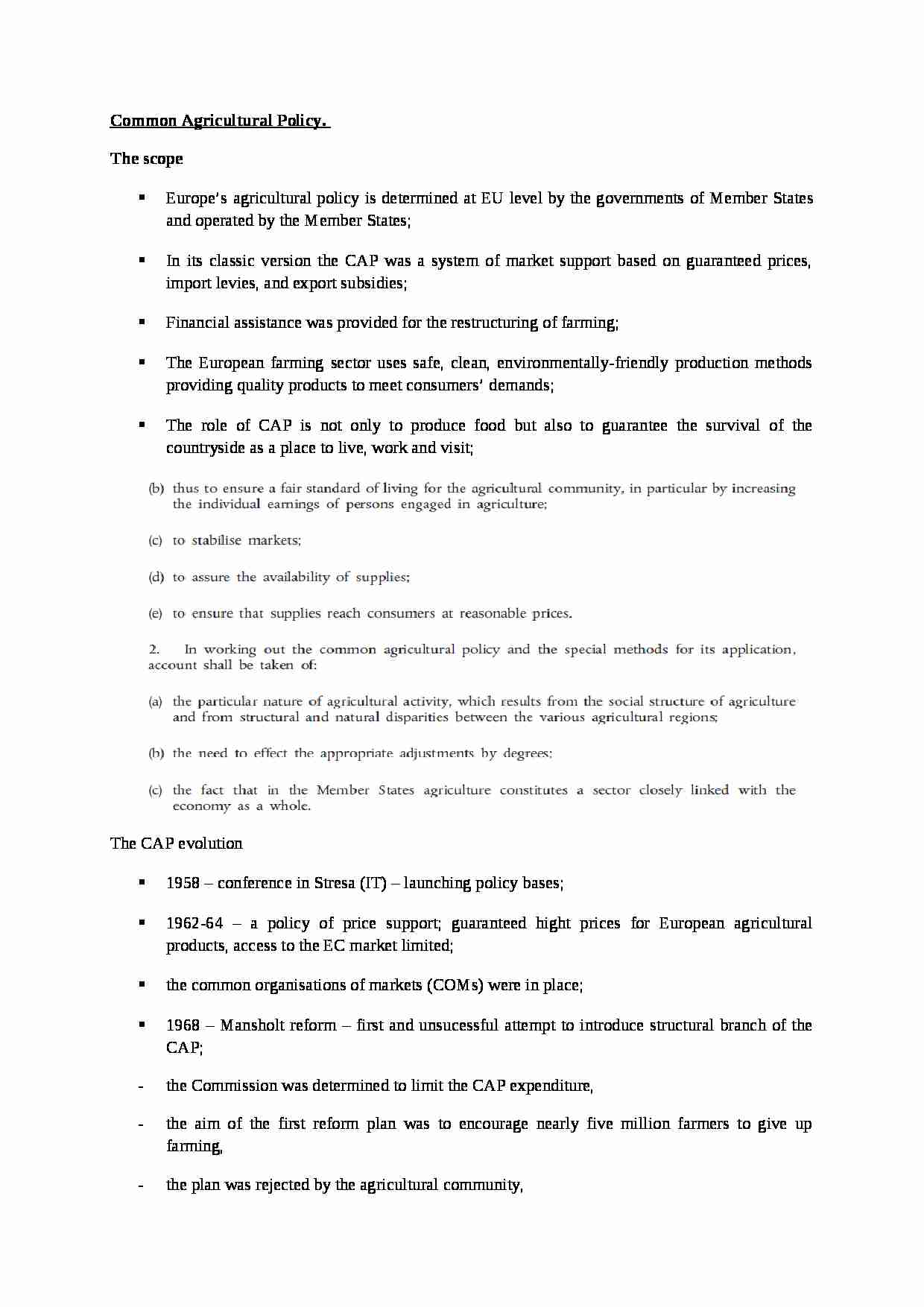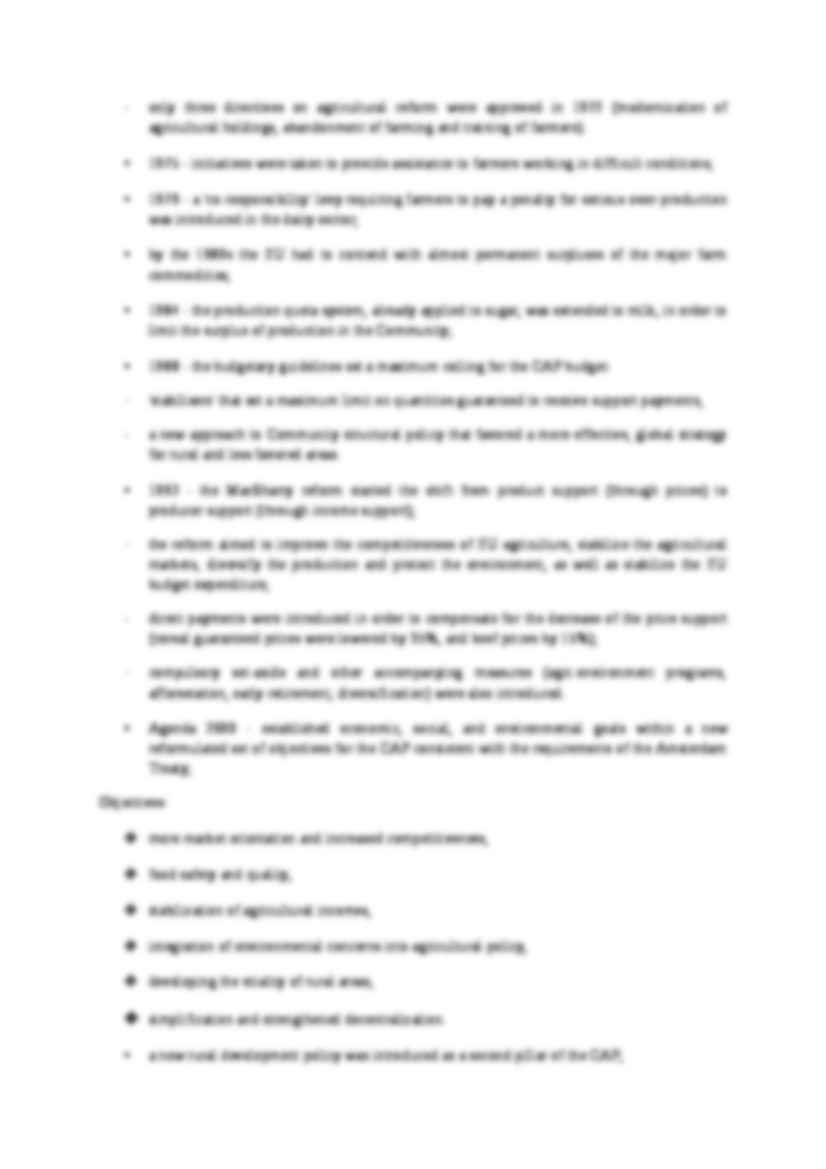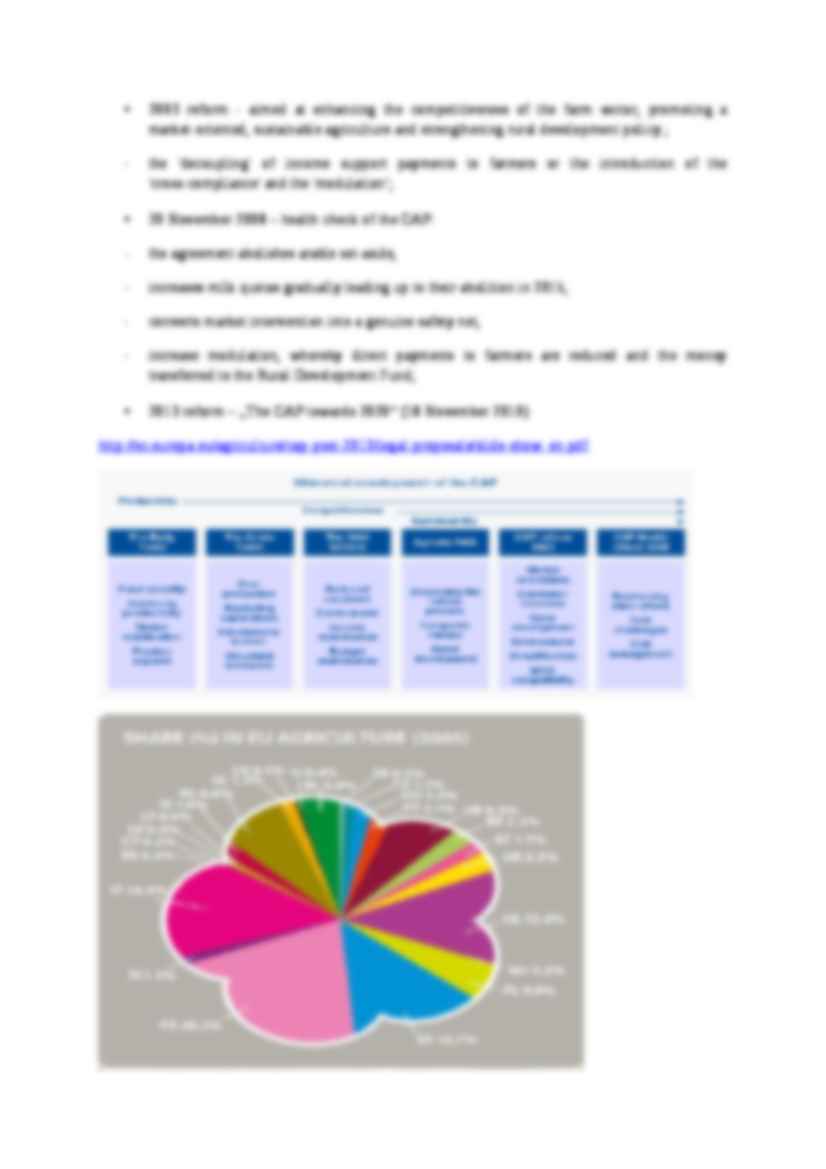To tylko jedna z 4 stron tej notatki. Zaloguj się aby zobaczyć ten dokument.
Zobacz
całą notatkę



Common Agricultural Policy. The scope
Europe's agricultural policy is determined at EU level by the governments of Member States and operated by the Member States;
In its classic version the CAP was a system of market support based on guaranteed prices, import levies, and export subsidies;
Financial assistance was provided for the restructuring of farming;
The European farming sector uses safe, clean, environmentally-friendly production methods providing quality products to meet consumers' demands;
The role of CAP is not only to produce food but also to guarantee the survival of the countryside as a place to live, work and visit; The CAP evolution 1958 - conference in Stresa (IT) - launching policy bases;
1962-64 - a policy of price support; guaranteed hight prices for European agricultural products, access to the EC market limited;
the common organisations of markets (COMs) were in place;
1968 - Mansholt reform - first and unsucessful attempt to introduce structural branch of the CAP;
the Commission was determined to limit the CAP expenditure,
the aim of the first reform plan was to encourage nearly five million farmers to give up farming,
the plan was rejected by the agricultural community,
only three directives on agricultural reform were approved in 1972 (modernization of agricultural holdings, abandonment of farming and training of farmers). 1975 - initiatives were taken to provide assistance to farmers working in difficult conditions;
1979 - a 'co-responsibility' levy requiring farmers to pay a penalty for serious over-production was introduced in the dairy sector;
by the 1980s the EU had to contend with almost permanent surpluses of the major farm commodities;
1984 - the production quota system, already applied to sugar, was extended to milk, in order to limit the surplus of production in the Community;
1988 - the budgetary guidelines set a maximum ceiling for the CAP budget:
'stabilisers' that set a maximum limit on quantities guaranteed to receive support payments,
a new approach to Community structural policy that favored a more effective, global strategy for rural and less favored areas. 1992 - the MacSharry reform started the shift from product support (through prices) to producer support (through income support);
the reform aimed to improve the competitiveness of EU agriculture, stabilize the agricultural markets, diversify the production and protect the environment, as well as stabilize the EU budget expenditure;
direct payments were introduced in order to compensate for the decrease of the price support (cereal guaranteed prices were lowered by 35%, and beef prices by 15%);
(…)
… November 2008 - health check of the CAP:
the agreement abolishes arable set-aside,
increases milk quotas gradually leading up to their abolition in 2015, converts market intervention into a genuine safety net,
increase modulation, whereby direct payments to farmers are reduced and the money transferred to the Rural Development Fund;
2013 reform - „The CAP towards 2020” (18 November 2010)
http…
... zobacz całą notatkę






Komentarze użytkowników (0)